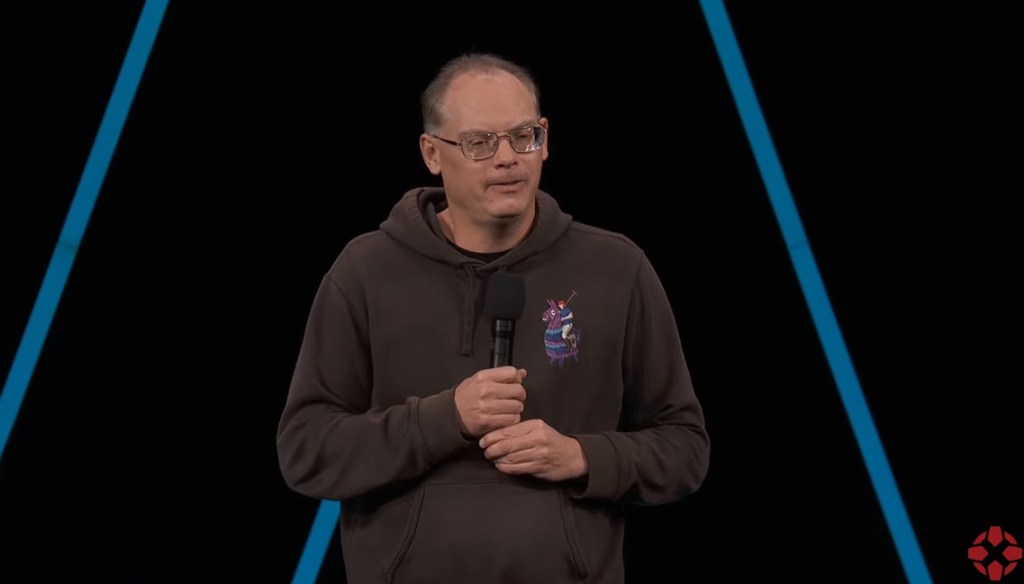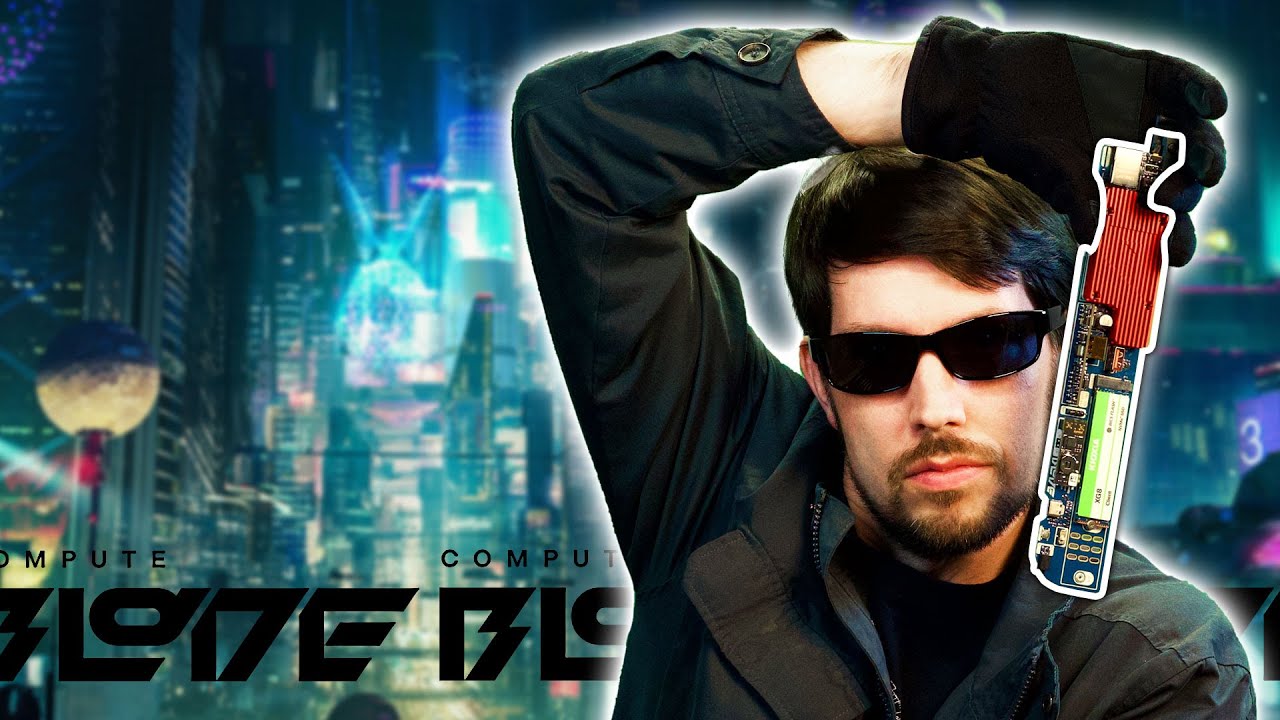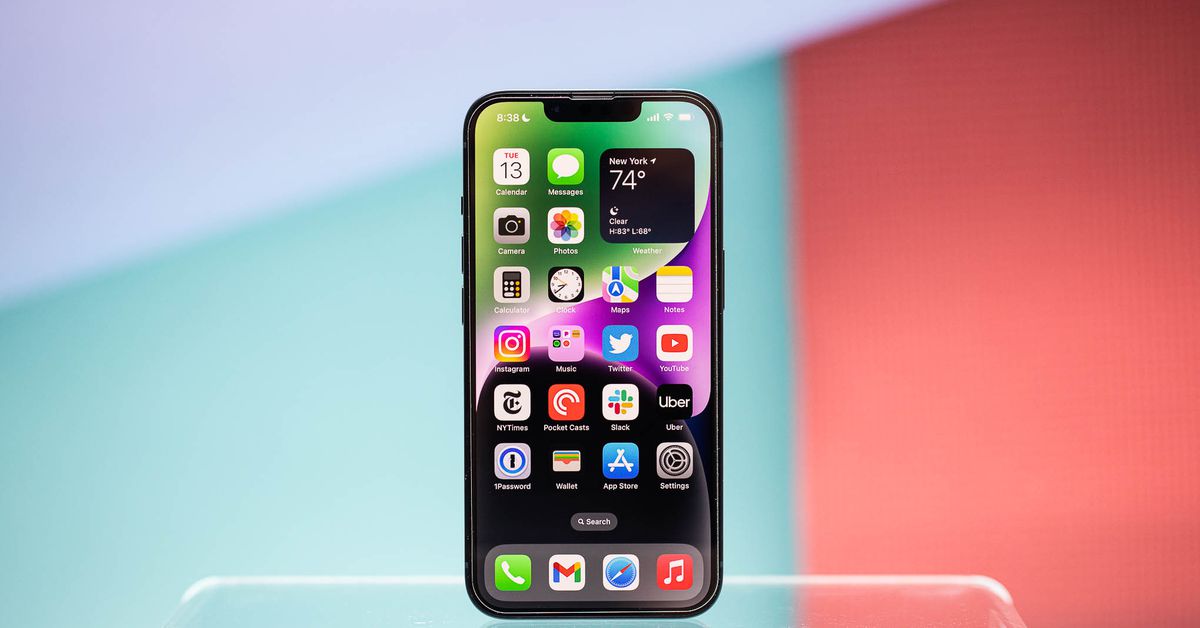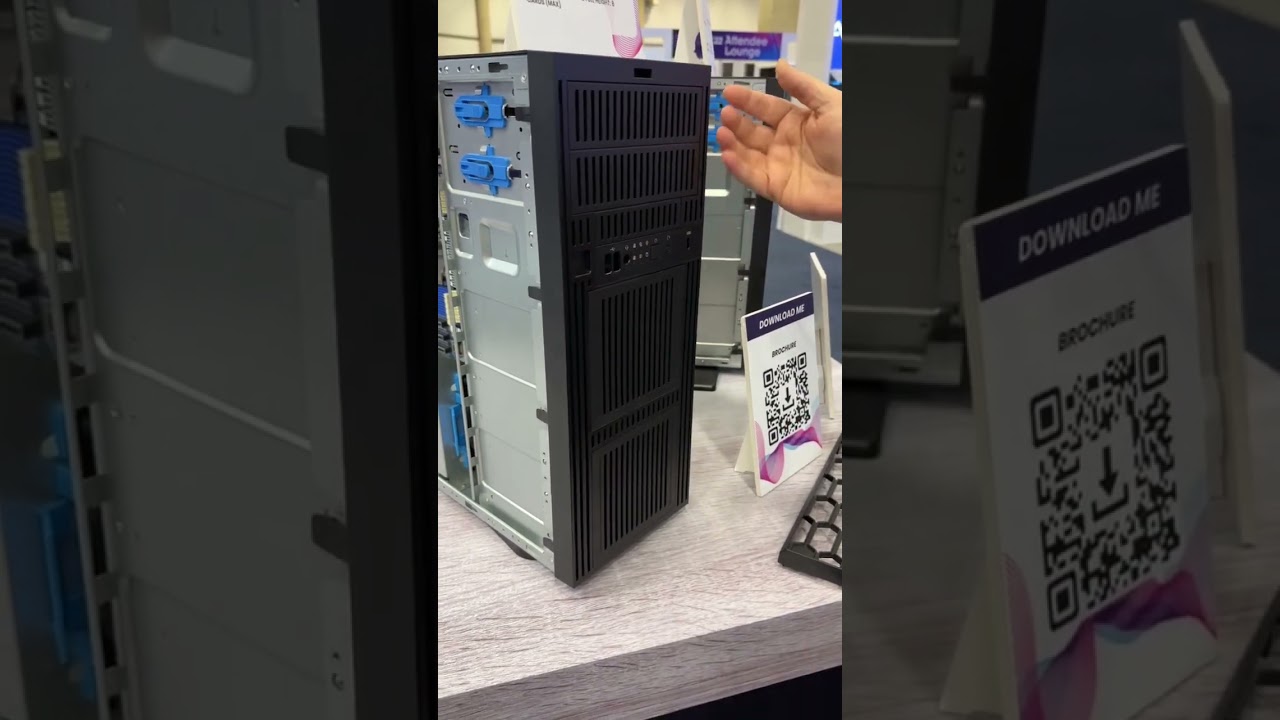Sony has announced new versions of its LinkBuds wireless earbuds with “improved wearability” and built-in voice controls, making them easier to leave in your ears all day. Both the new LinkBuds Open and LinkBuds Fit are available for preorder today for $199.99, alongside a new LinkBuds Speaker debuting at $179.99 that will be limited to the US market.
Technology
Sony’s new LinkBuds add voice controls without a smart assistant

The original Sony LinkBuds, first announced in early 2022, featured a unique “open ring design” that skipped sound-isolating ear tips for a donut-shaped speaker, allowing ambient sounds to be heard at all times. The new version, now known as the LinkBuds Open, features a similar but smaller design, with a new 11-millimeter speaker to enhance volume and bass performance. Sony also includes redesigned silicone wings called “Air Fitting Supporters” that it says will reduce pressure points and make the earbuds more comfortable to wear for longer periods.
With voice control capabilities now built right into the LinkBuds Open, you can adjust volume, skip tracks, and change ANC modes without having to ask Siri or Google Assistant to do it for you. It also means that voice controls are available when connected to devices that lack a voice-activated assistant of their own, like consoles or in-flight entertainment systems.
Battery life for the LinkBuds Open is now eight hours with the earbuds alone, or a total of 22 hours with their charging case (up from 5.5 hours and 17.5 hours, previously), while a three-minute quick charge will provide up to an hour of music playback. To further extend battery life, Sony is adding a new “auto battery save” option that turns off features like EQ adjustments, speak to chat, and voice controls when the earbuds’ batteries drop below 20 percent.
The LinkBuds Open come with Bluetooth 5.3, offer multi-device connectivity, and support the SBC, AAC, and LC3 codecs. Sony says the earbuds also now feature the same V2 chip as its flagship WF-1000XM5 earbuds, offering a more stable connection to devices.
The new LinkBuds Fit are a smaller and lighter version of the LinkBuds S, which debuted in mid-2022 as an alternative to the original LinkBuds for those wanting ANC. The new Fit comes with shorter ear tips and Sony’s “Air Fitting Supporters,” similar to what’s included with the LinkBuds Open, to help better distribute the weight of the earbuds around the ear.
Their smaller size does come with a sacrifice in battery life for the buds: it is now 5.5 hours instead of six. But when the LinkBuds Fit are paired with their charging case, overall battery life improves from 20 hours to 21, with the same quick charge capabilities as the LinkBuds Open.
The new Fit also feature the V2 processor from Sony’s WF-1000XM5 earbuds, powering both its ANC and ambient sound modes. The Fit also inherit the Dynamix Driver X from Sony’s premium earbuds for improved sound quality, and while its Bluetooth capabilities match the LinkBuds Open, their codec compatibility includes support for Sony’s LDAC, which allows better quality Hi-Res audio to be streamed.
If you’re looking to customize the appearance of the LinkBuds Fit, Sony will also sell the “Air Fitting Supporters” in several alternate colors like ash pink, ash green, and pure black for $9.99, as well as a $19.99 silicone cover for the charging case in matching shades.
Sony is expanding its LinkBuds line with the new LinkBuds Speaker, designed to complement the wireless earbuds. Featuring a single tweeter and woofer paired with a passive radiator, the speaker includes a charging dock; Sony says battery life is as much as 25 hours at moderate volume or up to six hours at maximum volume.
What sets the LinkBuds Speaker apart from Sony’s other wireless speakers is a new Auto Switch mode that can automatically swap playback from the earbuds when you get close enough. Compatible models include the new LinkBuds Fit and Open, the older LinkBuds S, and Sony’s WH-1000XM5 and WF-1000XM5 headphones. So, if you’re listening to music and head into the kitchen to make a snack, you can opt to have the music switch to the speaker and give your ears a break.
The LinkBuds Speaker includes a microphone so it can be used as a speakerphone, a button that will start streaming music from your preferred service, and daily routines that can be scheduled through a mobile app, so you can use it as an alarm clock. It’s available in either a gray or black finish, but with limited IPX4 splash resistance, it’s mostly designed for indoor use away from bad weather or the risk of being dunked in a pool.
Technology
Epic Games CEO Tim Sweeney renews blast at ‘gatekeeper’ platform owners

Epic Games CEO Tim Sweeney opened the Unreal Fest Seattle event today with an update on news that included a blistering criticism of monopolistic platform owners.
Sweeney is a big proponent of open platforms and the open metaverse. In fact, he will talk about that subject in a virtual talk at our GamesBeat Next 2024 event on October 28-29 in San Francisco. (You can use this code for a 25% discount: gbn24dean). And so Sweeney continues to pressure the major platforms to give more favorable terms to game developers.
He started out on that front by giving a price cut for users of Unreal Engine 5, Epic’s tools for making games. For those who release games first or simultaneously on the Epic Games Store, Epic is cutting its royalty rate from 5% to 3.5% for Unreal developers.
He noted that Epic is in better financial shape than it was a year ago, when Epic had to lay off a lot of staff. Sweeney said the company spent the last year rebuilding.
Join us for GamesBeat Next!
GamesBeat Next is almost here! GB Next is the premier event for product leaders and leadership in the gaming industry. Coming up October 28th and 29th, join fellow leaders and amazing speakers like Matthew Bromberg (CEO Unity), Amy Hennig (Co-President of New Media Skydance Games), Laura Naviaux Sturr (GM Operations Amazon Games), Amir Satvat (Business Development Director Tencent), and so many others. See the full speaker list and register here.
“I’m happy to tell you now that the company is financially sound and that Fortnite and Epic Games Store hit new record records in concurrency and success,” he said.
Fortnite reached a peak last holiday season of 110 million monthly active users, and Sweeney said the Epic Games Store is seeing record success. He said the company has emphasized the shift toward large social games and the concept of the metaverse. The strategy includes unifying Unreal Engine 5’s high-end features with Unreal Editor for Fortnite (UEFN) to create Unreal Engine 6, aiming for easier, scalable game development.
He also noted the financial cushion that came from a $1.5 billion investment from Disney, which has teamed with Epic Games to create a Disney-based virtual world with all of Disney’s characters — interconnected with the world of Fortnite. He noted Epic’s small but important victory against Apple in court in the U.S. and in the regulatory arena in the European Union, enabling developers to promote alternative app stores without (too severe) penalties from Apple.
And he noted Epic’s legal victory against Google’s app store Google Play in Epic’s antitrust lawsuit (alongside the federal victory over Google in a search-related antitrust case). But he still had harsh words for Samsung and Google, noting a fresh antitrust lawsuit over their alleged collusion to block Fortnite’s return to the Samsung app store on Android smartphones.
Sweeney noted there is a generational change in the game industry, with established titles with familiar gameplay not doing as well with consumers, while players are gravitating to big games with more friends.
“This is all happening in the context of a game business. It’s rapidly changing in a way that we’ve only seen a few times in our lifetimes as game developers. It’s a generational change, and while the one of the manifestations we’re seeing right now is a lot of games are released with high budgets, and they’re not selling nearly as well as expected, whereas other games are going incredibly strong,” Sweeney said. “What we’re seeing the real trend here is the players are gravitating towards the really big games where they can play with more of their friends. And so this is a manifestation of Metcalfe’s Law,” about how the value of a network or social experience grows in proportion to the number of friends you can connect to.

“And in the world of gaming, that means that you and your friends getting together and playing games, chatting by voice, attending concerts and doing all other kinds of cool virtual things online,” he said. “And this trend — some people will call it the metaverse, and we’re not all in agreement on what this means. Some people, when they hear the word metaverse, they think of what Facebook is doing with VR and now AR. Some people use the metaverse to describe everything they don’t like about the current Fortnite season. But when you look at what’s happening in the world of Fortnite, it’s new and it’s exciting, and it’s something that never happened at this scale in the history of entertainment, with all an original story that’s evolving with original content and also all the world’s brands participating, dropping in, musicians, reaching users, Disney and Star Wars and others, all coming together to create a world class entertainment experience.”
This is the future of gaming, he said.
Back to growth

“The primary goal for this decade is to help all developers achieve” their growth goals, he said. “And our strategy for doing this over time is to share everything we’ve built with you so that you can do these same things. And this is not just a message to game developers. It’s also a message the entire real time industry.”
That means film and TV makers can use Unreal Engine for virtual production on a massive scale. So can architecture firms, automotive companies, fashion, music, enterprises and gaming, he said.
“The common thing all of this shares is that we all aim to reach the world with our stuff, and we’re all using the same tools to make this come together in an unprecedented skill. I think Fortnite is just one demonstration. Other games are doing similar things, but as this is adopted more widely by the entire world, we think it’s a growth opportunity for everybody, and we’re way out of the game industry’s current malaise,” Sweeney said.
Epic’s next journey is to create Unreal Engine 6. There’s Unreal Engine 5 for high-end game development in consoles, mobile games and PCs. And there is a new thread of development for user-generated content makers and smaller companies using Unreal Editor for Fortnite.
“Over the next few years, we’re going to be bringing these two development [threads] together,” he said.
That will lead to Unreal Engine 6 and foundations for gameplay programming that are easier to learn and more scalable.
He said Epic will help enable everybody to build a game once and then choose one platform or to ship it to all platforms and all the app stores at once.
On the metaverse, he said Epic is participating in standards bodies like the Metaverse Standards Forum and other groups to define standards applicable to all engines and all digital content creation tools.
“The ultimate aim of this effort is to achieve technical interoperability between games and game engines of all sorts, and to achieve economic interoperability in an open system,” he said. “The game developers can easily build experiences standalone or in Fortnite or anywhere. Purchases in one place are honored in other places, and the entire economy is an open economy where everybody can participate.”
He said that Epic and Disney are working together to build a “new Disney ecosystem that is Disney’s but is also fully connected to Fortnite, such that anything you get in one place can work in the other place, and your experiences aren’t disconnected, and you have the same friends, same items and the same the same social experience as you go.”
He said this partnership is just the first step towards an open system in which all companies and creators can participate together in the future as peers.
More litigation

He said one really important aspect to this effort is “Epic’s fight to open mobile platforms to competition because for a vibrant digital ecosystem to exist in the future, we need fair competition into these monopoly rent collectors now.”
He said the app stores focus on limiting what developers can do, imposing more restrictions to prevent things like the metaverse from happening, or to tax developers to the point where they’re extracting all of the profits from a game’s sales.
“We’re at a point now where game development is expensive. It’s low margin, and game companies are suffering. Apple and Google make way more profit from most games than the developers make themselves, while contributing nothing,” Sweeney said.
So Tim, tell us how you really feel.
He noted how he grew up programming an Apple computer to follow the Steve Wozniak vision for Apple, not the modern corporate vision of Apple. He misses the days when you could do anything with a computer, with not need to ask a corporation’s permission for anything. He noted that is why there is more innovation on Windows, Mac and Linux than on the mobile platforms. He referred to Apple and Google as gatekeepers.
“Among the fights we’ve taken on here, he noted the case with Apple is still an ongoing fight to open up payments so developers can process payments without Apple mediation and without Apple fees,” he said.
He noted the “massive victory” against Google in a jury trial late last year, when Google lost on all counts in antitrust litigation. He noted the European Union’s implementation of the Digital Markets Act, which enabled Fortnite to return to iOS in Europe.
And he said the United Kingdom and Japan have passed new laws, and there’s major legislation in many major developing countries all around the world.
“The world is changing for the better. There’s much more to do. We’re going to keep fighting on until there’s a victory,” he said.
I’ve asked Apple, Google and Samsung for comment.
Source link
Servers computers
ARM yourselves! The Compute Blade is here.

It won’t turn you into a ninja, but it will help you build a Pi cluster.
Check out the Compute Blade on Kickstarter:
https://www.kickstarter.com/projects/uptimelab/compute-blade?ref=bfyfme
Mentioned in this video:
– Compute Blade: https://computeblade.com
– My open source Pi Cluster project: https://github.com/geerlingguy/pi-cluster
– Radxa CM3 and Pine64 SOQuartz review: https://www.youtube.com/watch?v=aXlcNVKK-7Q
– BigTreeTech CB1 Review in Livestream: https://www.youtube.com/watch?v=Krpac-MaD5s
– Compute Blade alpha review: https://www.youtube.com/watch?v=zH9GwYZu_aE
Support me on Patreon: https://www.patreon.com/geerlingguy
Sponsor me on GitHub: https://github.com/sponsors/geerlingguy
Merch: https://redshirtjeff.com
2nd Channel: https://www.youtube.com/c/GeerlingEngineering
Contents:
00:00 – This is the Compute Blade
00:34 – A Slice of Pi
03:35 – Why blade?
06:15 – Pine64’s Blade
06:58 – Clone Wars
10:17 – Kickstarter and price .
source
Technology
Acceleron Fusion has raised $15M to take another stab at cold fusion, filing reveals

Fusion startups have been on a fundraising tear lately, and a young startup, Acceleron Fusion, is joining the pack, having raised $15 million of a targeted $23.7 million round, according to an SEC filing.
The fusion sector recently has been showered with interest from investors, who no doubt have been encouraged by the breakthrough experiment at the National Ignition Facility two years ago, which proved that a controlled fusion reaction could generate more power than was required to kick it off.
The first company to build a power plant that can produce electricity that can be sold to the grid en masse could start chipping away at the multi-trillion-dollar global energy market. Tech firms, in particular, have been eyeing fusion and nuclear startups as possible pollution-free solutions to their AI-induced power demands.
Acceleron did not immediately reply to questions.
Where most startups aim to re-create the superheated, super-pressurized conditions inside of a star, Acceleron takes a different approach, using subatomic particles known as muons to lower the heat and pressure required for fusion reactions to take place.
In nature, atoms tend to resist fusing, mostly because an atom’s orbiting electrons repel other atoms. To get around that, most approaches to fusion follow nature’s approach: they get atoms hot enough and close enough that their electrons are freed from their orbits, lowering the usual atomic inhibitions. As atomic nuclei zip around without their electrons, some ram into each other, fusing into a new nucleus and releasing enormous amounts of energy. That’s what happens inside a star.
Muon-catalyzed fusion takes a different tack. Instead of heating and compressing hydrogen isotopes, it injects muons into the mix. Muons are subatomic particles that resemble electrons — both have a negative charge — but their mass is 207 times greater. As muons bombard hydrogen isotopes, they replace electrons in some atoms. A muon orbits the nucleus of an atom much more closely than an electron, lowering the barrier atoms need to fuse.
In muon-catalyzed fusion, the barrier is low enough that fusion can occur at room temperature and pressure. That’s why it’s sometimes called cold fusion. While muon-catalyzed has been demonstrated in laboratory conditions, the energy required to generate muons has so far outstripped the amount of energy produced by any fusion reactions.
There are a few reasons why muon-catalyzed fusion hasn’t worked yet. For one, each muon only lasts for about 2.2 microseconds before it decays into less useful subatomic particles. That’s long enough to facilitate about 100 fusion reactions, but still too short for commercial power purposes. The other problem is that about 0.8% of the time, a muon gets stuck to another subatomic particle (an alpha particle) and doesn’t participate in any more fusion reactions. That may not seem like much, but again, it has been high enough to doom commercial plans.
Cambridge, Massachusetts-based Acceleron, which spun out of NK Labs, is hoping that by raising the pressure of the hydrogen isotope mix, and maybe the temperature, it’ll be able to reduce the rate at which muons stick to alpha particles. The hope is to keep enough muons in the mix to catalyze more fusion reactions, ideally enough more that they’ll offset the amount of power required to generate the muons.
NK Labs was awarded a three-year, $2 million ARPA-E grant in 2020 to explore whether higher pressure would improve the prospects of muon-catalyzed fusion. The results, not all of which are public at this time, appear to have piqued investors’ interests.
Servers computers
The Chenbro SR115 is a 4U rackable or tower server chassis with eight PCIe slots for adding more I/O
Technology
The next iPhone SE may lose the home button, add Face ID and Apple Intelligence

That the new iPhone SE models may support Apple Intelligence says a lot about their performance — it takes a lot of RAM to run local AI features, for instance. They’re expected to look like the iPhone 14, doing away with the chunky top and bottom bezels and the home button; both are firsts for the entry-level smartphone. It’s also rumored that the iPhone SE 4 will get an OLED screen, rather than the usual LCD.
Apple will produce 11-inch and 13-inch iPad Airs with “internal improvements” at the same time as the new SE models, Gurman writes. And right along with those will be new Magic Keyboards for both sizes that will come with some iPad Pro keyboard features.
Finally, according to Gurman, before the year is through, Apple will release new M4-equipped computers: a smaller Mac Mini, new MacBook Pros, and iMacs. He reckons an update to the iPad Mini is also possible.
Technology
AWS forced to pay out millions in major patent dispute


A US jury has ruled Amazon Web Services (AWS) willingly infringed on two patents, and must now pay $30.5 million for violating the patent owner’s rights in computer networking and broadcasting technology.
The offending technologies were AWS’s Cloudfront content delivery network and Virtual Private Cloud virtual network – which infringed on the patents originally owned by Boeing, but obtained by Acceleration Bay.
The two patents in this case are said to involve methods of streamlining data delivery across a network. Without getting too technical, the technologies allow data to be sent from peer to peer and flow around slow or broken connections by forming a network.
Assertion entity
Acceleration Bay describes itself as an ‘Incubator & Investor’, and recently won a separate patent trial against Activision, in which the video game developer was ordered to pay $23.4 million.
The final court’s judgement in the AWS case will come soon, but the payout could yet triple, due to the fact that Amazon ‘willfully’ breached the patents. AWS cloud services reportedly brings in around $9 billion operating profit per quarter – which is around 62% of Amazon’s total, so it probably won’t be hit too hard by the charges.
This isn’t the first time AWS has faced opposition with patented technology, having had to pay $525 million in damages earlier in 2024 after losing a cloud storage patent case.
The tech giant has also had a long-running spat with Nokia, with both firms bringing forward patent lawsuits against each other in recent years – most recently, in August 2024, AWS accused Nokia of over a dozen infringements for cloud computing technologies.
Since AWS is a dominant player in the cloud storage game, naturally it controls a lot of the technologies involved, which it claimed Nokia was using without permission.
Via The Register
More from TechRadar Pro
-

 Womens Workouts1 week ago
Womens Workouts1 week ago3 Day Full Body Women’s Dumbbell Only Workout
-

 Technology2 weeks ago
Technology2 weeks agoWould-be reality TV contestants ‘not looking real’
-

 Science & Environment2 weeks ago
Science & Environment2 weeks agoHyperelastic gel is one of the stretchiest materials known to science
-

 Science & Environment2 weeks ago
Science & Environment2 weeks agoHow to wrap your mind around the real multiverse
-

 Science & Environment2 weeks ago
Science & Environment2 weeks ago‘Running of the bulls’ festival crowds move like charged particles
-

 News1 week ago
News1 week agoOur millionaire neighbour blocks us from using public footpath & screams at us in street.. it’s like living in a WARZONE – WordupNews
-

 Science & Environment2 weeks ago
Science & Environment2 weeks agoHow to unsnarl a tangle of threads, according to physics
-

 Science & Environment2 weeks ago
Science & Environment2 weeks agoMaxwell’s demon charges quantum batteries inside of a quantum computer
-

 Science & Environment2 weeks ago
Science & Environment2 weeks agoSunlight-trapping device can generate temperatures over 1000°C
-

 Science & Environment2 weeks ago
Science & Environment2 weeks agoITER: Is the world’s biggest fusion experiment dead after new delay to 2035?
-

 Science & Environment2 weeks ago
Science & Environment2 weeks agoLiquid crystals could improve quantum communication devices
-

 Science & Environment2 weeks ago
Science & Environment2 weeks agoPhysicists are grappling with their own reproducibility crisis
-

 Science & Environment2 weeks ago
Science & Environment2 weeks agoQuantum ‘supersolid’ matter stirred using magnets
-

 News2 weeks ago
News2 weeks agoYou’re a Hypocrite, And So Am I
-

 Science & Environment2 weeks ago
Science & Environment2 weeks agoQuantum forces used to automatically assemble tiny device
-

 Sport2 weeks ago
Sport2 weeks agoJoshua vs Dubois: Chris Eubank Jr says ‘AJ’ could beat Tyson Fury and any other heavyweight in the world
-

 Science & Environment2 weeks ago
Science & Environment2 weeks agoWhy this is a golden age for life to thrive across the universe
-

 Science & Environment2 weeks ago
Science & Environment2 weeks agoNuclear fusion experiment overcomes two key operating hurdles
-

 Science & Environment2 weeks ago
Science & Environment2 weeks agoCaroline Ellison aims to duck prison sentence for role in FTX collapse
-

 Science & Environment2 weeks ago
Science & Environment2 weeks agoTime travel sci-fi novel is a rip-roaringly good thought experiment
-

 Science & Environment2 weeks ago
Science & Environment2 weeks agoLaser helps turn an electron into a coil of mass and charge
-

 Science & Environment2 weeks ago
Science & Environment2 weeks agoNerve fibres in the brain could generate quantum entanglement
-

 News2 weeks ago
News2 weeks agoIsrael strikes Lebanese targets as Hizbollah chief warns of ‘red lines’ crossed
-

 CryptoCurrency2 weeks ago
CryptoCurrency2 weeks agoCardano founder to meet Argentina president Javier Milei
-

 Science & Environment1 week ago
Science & Environment1 week agoMeet the world's first female male model | 7.30
-

 Womens Workouts2 weeks ago
Womens Workouts2 weeks agoBest Exercises if You Want to Build a Great Physique
-

 Science & Environment2 weeks ago
Science & Environment2 weeks agoWhy we need to invoke philosophy to judge bizarre concepts in science
-

 CryptoCurrency2 weeks ago
CryptoCurrency2 weeks agoBitcoin miners steamrolled after electricity thefts, exchange ‘closure’ scam: Asia Express
-

 CryptoCurrency2 weeks ago
CryptoCurrency2 weeks agoDZ Bank partners with Boerse Stuttgart for crypto trading
-

 CryptoCurrency2 weeks ago
CryptoCurrency2 weeks agoEthereum is a 'contrarian bet' into 2025, says Bitwise exec
-

 Womens Workouts2 weeks ago
Womens Workouts2 weeks agoEverything a Beginner Needs to Know About Squatting
-

 News1 week ago
News1 week agoFour dead & 18 injured in horror mass shooting with victims ‘caught in crossfire’ as cops hunt multiple gunmen
-

 Womens Workouts1 week ago
Womens Workouts1 week ago3 Day Full Body Toning Workout for Women
-

 Science & Environment2 weeks ago
Science & Environment2 weeks agoA slight curve helps rocks make the biggest splash
-

 News2 weeks ago
News2 weeks ago▶️ Media Bias: How They Spin Attack on Hezbollah and Ignore the Reality
-

 Science & Environment2 weeks ago
Science & Environment2 weeks agoQuantum time travel: The experiment to ‘send a particle into the past’
-

 CryptoCurrency2 weeks ago
CryptoCurrency2 weeks agoDorsey’s ‘marketplace of algorithms’ could fix social media… so why hasn’t it?
-

 CryptoCurrency2 weeks ago
CryptoCurrency2 weeks agoRedStone integrates first oracle price feeds on TON blockchain
-

 CryptoCurrency2 weeks ago
CryptoCurrency2 weeks agoBitcoin bulls target $64K BTC price hurdle as US stocks eye new record
-

 CryptoCurrency2 weeks ago
CryptoCurrency2 weeks agoLow users, sex predators kill Korean metaverses, 3AC sues Terra: Asia Express
-

 Sport2 weeks ago
Sport2 weeks agoUFC Edmonton fight card revealed, including Brandon Moreno vs. Amir Albazi headliner
-

 CryptoCurrency2 weeks ago
CryptoCurrency2 weeks agoBlockdaemon mulls 2026 IPO: Report
-

 News2 weeks ago
News2 weeks agoBrian Tyree Henry on voicing young Megatron, his love for villain roles
-

 CryptoCurrency2 weeks ago
CryptoCurrency2 weeks agoCoinbase’s cbBTC surges to third-largest wrapped BTC token in just one week
-

 Travel1 week ago
Travel1 week agoDelta signs codeshare agreement with SAS
-

 Politics6 days ago
Politics6 days agoHope, finally? Keir Starmer’s first conference in power – podcast | News
-

 Science & Environment2 weeks ago
Science & Environment2 weeks agoBeing in two places at once could make a quantum battery charge faster
-

 Science & Environment2 weeks ago
Science & Environment2 weeks agoA new kind of experiment at the Large Hadron Collider could unravel quantum reality
-

 Science & Environment2 weeks ago
Science & Environment2 weeks agoHow one theory ties together everything we know about the universe
-

 Science & Environment2 weeks ago
Science & Environment2 weeks agoFuture of fusion: How the UK’s JET reactor paved the way for ITER
-

 Science & Environment2 weeks ago
Science & Environment2 weeks agoHow do you recycle a nuclear fusion reactor? We’re about to find out
-

 Science & Environment2 weeks ago
Science & Environment2 weeks agoTiny magnet could help measure gravity on the quantum scale
-

 CryptoCurrency2 weeks ago
CryptoCurrency2 weeks agoCrypto scammers orchestrate massive hack on X but barely made $8K
-

 CryptoCurrency2 weeks ago
CryptoCurrency2 weeks ago‘No matter how bad it gets, there’s a lot going on with NFTs’: 24 Hours of Art, NFT Creator
-

 CryptoCurrency2 weeks ago
CryptoCurrency2 weeks agoSEC asks court for four months to produce documents for Coinbase
-
Business2 weeks ago
How Labour donor’s largesse tarnished government’s squeaky clean image
-

 Technology2 weeks ago
Technology2 weeks agoiPhone 15 Pro Max Camera Review: Depth and Reach
-

 News2 weeks ago
News2 weeks agoBrian Tyree Henry on voicing young Megatron, his love for villain roles
-

 Womens Workouts2 weeks ago
Womens Workouts2 weeks agoHow Heat Affects Your Body During Exercise
-

 Womens Workouts2 weeks ago
Womens Workouts2 weeks agoKeep Your Goals on Track This Season
-

 News1 week ago
News1 week agoWhy Is Everyone Excited About These Smart Insoles?
-

 Science & Environment2 weeks ago
Science & Environment2 weeks agoUK spurns European invitation to join ITER nuclear fusion project
-

 News2 weeks ago
News2 weeks agoChurch same-sex split affecting bishop appointments
-

 Technology2 weeks ago
Technology2 weeks agoFivetran targets data security by adding Hybrid Deployment
-

 CryptoCurrency2 weeks ago
CryptoCurrency2 weeks ago$12.1M fraud suspect with ‘new face’ arrested, crypto scam boiler rooms busted: Asia Express
-

 CryptoCurrency2 weeks ago
CryptoCurrency2 weeks agoDecentraland X account hacked, phishing scam targets MANA airdrop
-

 CryptoCurrency2 weeks ago
CryptoCurrency2 weeks agoCertiK Ventures discloses $45M investment plan to boost Web3
-

 CryptoCurrency2 weeks ago
CryptoCurrency2 weeks agoBeat crypto airdrop bots, Illuvium’s new features coming, PGA Tour Rise: Web3 Gamer
-

 CryptoCurrency2 weeks ago
CryptoCurrency2 weeks agoTelegram bot Banana Gun’s users drained of over $1.9M
-

 CryptoCurrency2 weeks ago
CryptoCurrency2 weeks agoVonMises bought 60 CryptoPunks in a month before the price spiked: NFT Collector
-

 CryptoCurrency2 weeks ago
CryptoCurrency2 weeks ago‘Silly’ to shade Ethereum, the ‘Microsoft of blockchains’ — Bitwise exec
-

 CryptoCurrency2 weeks ago
CryptoCurrency2 weeks agoEthereum falls to new 42-month low vs. Bitcoin — Bottom or more pain ahead?
-
Business2 weeks ago
Thames Water seeks extension on debt terms to avoid renationalisation
-
Politics2 weeks ago
‘Appalling’ rows over Sue Gray must stop, senior ministers say | Sue Gray
-

 Science & Environment1 week ago
Science & Environment1 week agoCNN TÜRK – 🔴 Canlı Yayın ᴴᴰ – Canlı TV izle
-

 News5 days ago
News5 days agoUS Newspapers Diluting Democratic Discourse with Political Bias
-
News2 weeks ago
the pick of new debut fiction
-

 Politics2 weeks ago
Politics2 weeks agoTrump says he will meet with Indian Prime Minister Narendra Modi next week
-

 Technology2 weeks ago
Technology2 weeks agoCan technology fix the ‘broken’ concert ticketing system?
-

 Health & fitness2 weeks ago
Health & fitness2 weeks agoThe secret to a six pack – and how to keep your washboard abs in 2022
-

 Science & Environment2 weeks ago
Science & Environment2 weeks agoSingle atoms captured morphing into quantum waves in startling image
-

 Science & Environment2 weeks ago
Science & Environment2 weeks agoHow Peter Higgs revealed the forces that hold the universe together
-

 Science & Environment2 weeks ago
Science & Environment2 weeks agoA tale of two mysteries: ghostly neutrinos and the proton decay puzzle
-

 CryptoCurrency2 weeks ago
CryptoCurrency2 weeks ago2 auditors miss $27M Penpie flaw, Pythia’s ‘claim rewards’ bug: Crypto-Sec
-

 CryptoCurrency2 weeks ago
CryptoCurrency2 weeks agoLouisiana takes first crypto payment over Bitcoin Lightning
-

 CryptoCurrency2 weeks ago
CryptoCurrency2 weeks agoJourneys: Robby Yung on Animoca’s Web3 investments, TON and the Mocaverse
-

 CryptoCurrency2 weeks ago
CryptoCurrency2 weeks ago‘Everything feels like it’s going to shit’: Peter McCormack reveals new podcast
-

 CryptoCurrency2 weeks ago
CryptoCurrency2 weeks agoSEC sues ‘fake’ crypto exchanges in first action on pig butchering scams
-

 CryptoCurrency2 weeks ago
CryptoCurrency2 weeks agoBitcoin price hits $62.6K as Fed 'crisis' move sparks US stocks warning
-

 CryptoCurrency2 weeks ago
CryptoCurrency2 weeks agoVitalik tells Ethereum L2s ‘Stage 1 or GTFO’ — Who makes the cut?
-

 News2 weeks ago
News2 weeks agoBrian Tyree Henry on his love for playing villains ahead of “Transformers One” release
-

 Womens Workouts2 weeks ago
Womens Workouts2 weeks agoWhich Squat Load Position is Right For You?
-

 News2 weeks ago
News2 weeks agoBangladesh Holds the World Accountable to Secure Climate Justice
-

 TV1 week ago
TV1 week agoCNN TÜRK – 🔴 Canlı Yayın ᴴᴰ – Canlı TV izle
-

 Technology1 week ago
Technology1 week agoRobo-tuna reveals how foldable fins help the speedy fish manoeuvre
-

 Science & Environment6 days ago
Science & Environment6 days agoX-rays reveal half-billion-year-old insect ancestor
-

 Technology2 weeks ago
Technology2 weeks agoIs carbon capture an efficient way to tackle CO2?
-

 Health & fitness2 weeks ago
Health & fitness2 weeks agoThe maps that could hold the secret to curing cancer
-

 Science & Environment2 weeks ago
Science & Environment2 weeks agoThe physicist searching for quantum gravity in gravitational rainbows
-

 CryptoCurrency2 weeks ago
CryptoCurrency2 weeks agoHelp! My parents are addicted to Pi Network crypto tapper


You must be logged in to post a comment Login